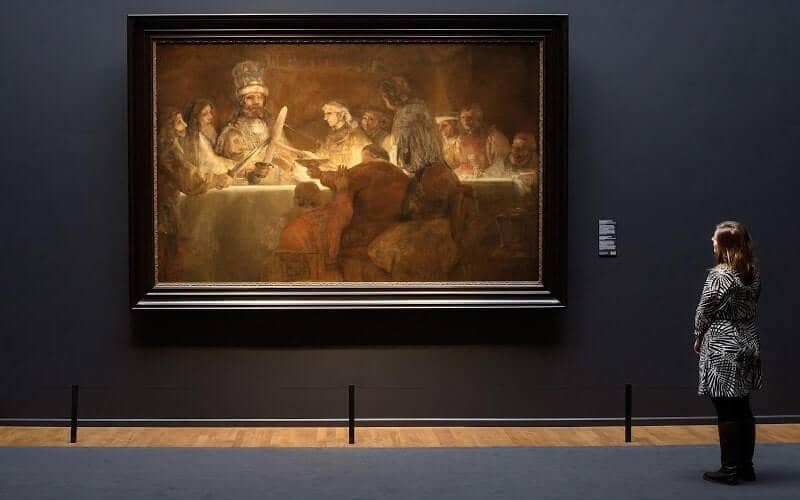The Conspiracy of Claudius Civilis, 1661 by Rembrandt

On the occasion of the building of the new Town Hall of Amsterdam, the municipal officials asked Govaert Flinck to decorate the great gallery. Flinck however died in 1660, and other painters,
including Rembrandt, were called in. The general theme of the work was the historical struggle of the Dutch people to rid themselves of the Roman rule under the leadership of Julius Civilis.
Rembrandt chose to depict the banquet during which Julius Civilis, head of the Batavian revolt, asked for the sworn allegiance of the noblemen in the struggle against the Roman invaders. The
authorities wanted to symbolize thus the recent war against Spain and expected a picture full of nobility and serenity. Rembrandt, on the contrary, went back to the story as told by Tacitus
(Histories, IV, 14) and showed all the violence and excitement of men incited by wine and the words of their leader. The picture was sent back and replaced with one painted by Jurriaen Ovens.
The original canvas was five meters by five, the largest Rembrandt ever painted. Unfortunately, in order to be able to sell it more easily, he cropped it and retained only the scene of the banquet.
Thanks to a sketch, one can realize the monumental importance the banquet had, being reached via staircases and held beneath a vast vault.

Undoubtedly Rembrandt retouched the picture so that it would not look like a fragment. The picture was intended to be hung high up on a wall in order to dominate the viewer. Whatever the state in which it
reached us, it has not lost anything of its monumental power: Rembrandt's art used other means than the traditional Baroque and architecture in order to convey the heroic aspect of his characters. He actually
created a new conception of monumental art by omitting the warm and neutral tonalities in favor of brilliant colors, like the red and the gold mixed with blue-grey and applied with a wide but light touch.
The mythical and barbarian grandeur of his characters has been compared with that of Shakespeare in Macbeth
and King Lear. Today, after Fauvism, Expressionism and Rouault, we are more prepared to accept The oath among contemporary masterpieces
than were the officials who refused it.




















